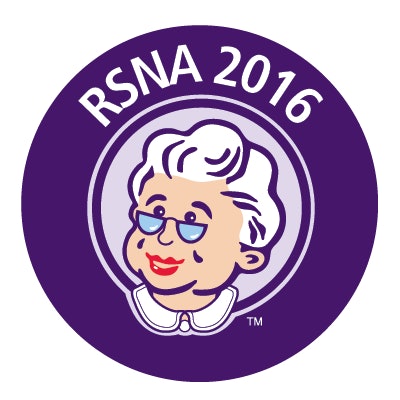
The number of imaging procedures conducted in private offices has gone down, due to a variety of factors. But there are still opportunities for radiologists to offer quality patient care in this setting, according to a presentation given at RSNA 2016 last week.
"Hospital outpatient imaging has been migrating from private offices since about 2010," Dr. David C. Levin, of Thomas Jefferson University, told session attendees. "But that doesn't mean that radiologists still can't make private office ventures work."
 Dr. David C. Levin from Thomas Jefferson University.
Dr. David C. Levin from Thomas Jefferson University.What has caused the decline? A number of factors, including the closure of some offices due to reimbursement cuts, the Deficit Reduction Act (DRA) of 2005, the U.S. Centers for Medicare and Medicaid Services' (CMS) multiple procedure payment reduction (MPPR) policy, practice expense revaluation, increases in equipment utilization factors, and code bundling, to name a few.
Although imaging has been shifting away from private offices to hospital outpatient imaging departments (HOPDs) across all modalities -- with a particular drop in 2011, when CMS initiated code bundling for CTs of the abdomen and pelvis -- the most dramatic downward trends have come from reimbursement cuts to cardiology exams such as myocardial perfusion imaging (MPI) and transthoracic echocardiograms.
"Since 2010, there's been a progressive drop in cardiology private office use, with cardiologists closing their offices or selling their practices to hospitals," Levin said. "So private office utilization is definitely in jeopardy for cardiology, but not so much for radiology."
| Radiology Medicare utilization rates, all imaging (rate per 1,000 exams) | ||||
| 2008 | 2010 | 2012 | 2014 | |
| Private office | 430 | 413 | 380 | 352 |
| HOPD | 894 | 885 | 823 | 820 |
| Cardiology Medicare utilization rates, all imaging (rate per 1,000 exams) | ||||
| 2008 | 2010 | 2012 | 2014 | |
| Private office | 445 | 182 | 149 | 129 |
| HOPD | 101 | 53 | 72 | 84 |
Levin offered the following ideas to help private radiology offices make the most of their situation:
- Develop a low-cost strategy to attract patients with high-deductible plans. "What this strategy looks like will depend on the office's payor and patient mix," Levin said. "But it's not hard to develop a fee schedule for imaging exams that is significantly more reasonable than what a hospital charges."
- Market yourself. "Hospitals generally don't market their radiology services, but private practices certainly can," he said.
- Develop a patient-friendly way of doing business. "If your office is well-managed, patients will notice," Levin said.
- Work as efficiently as possible, and reduce costs to an absolute minimum. "The more efficient your practice, the less your costs will be," he said.
What's the bottom line? The benefit of private office imaging is that these practices can be much more agile in terms of charges than hospital outpatient departments, and that appeals to patients, Levin said.
"Patients are going to have higher and higher deductibles, and that's going to make them shop around for healthcare," he said. "If you can offer, say, an MR of the knee for $600, while the local hospital has it at $4,000, you can be sure that patients will come to you."




















